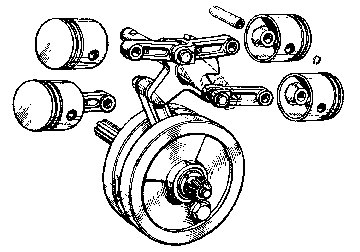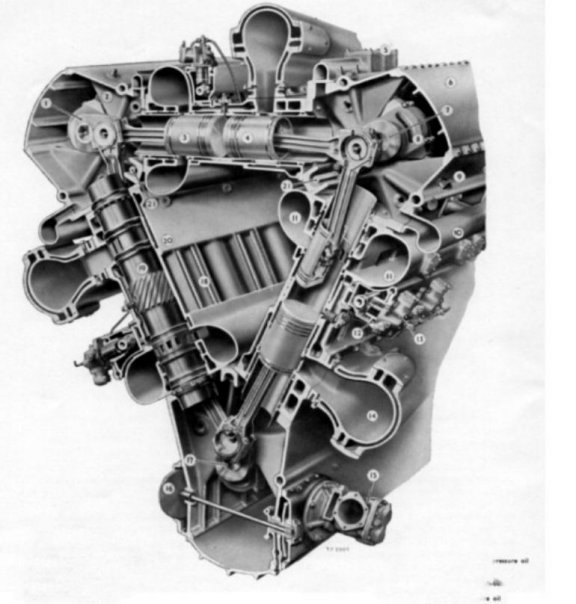Ray,
I
really had to dig for this one, but finally here it is, the Commer Double Knocker:

Commer TS3 Two Stroke Diesel Engine
Have you got it yet? The engine has three cylinders situated above and across the plane of the
crankshaft. Each cylinder contains two pistons with the crown facing inwards. On each side the
pistons are linked to the crankshaft via a short connecting rod, a substantial rocker arm and a
secondary connecting rod. Unlike a petrol engine, a two stroke diesel cannot use crankcase pressure
to boost the air supply, because it would tend to combust any oil that was entrapped in the air. A
Roots blower (i.e. rotating lobe type) is situated on the front of the engine and supplies the
combustion air. The total displacement is only 3.25 litres, but the engine develops 90 B.H.P.
Contemporary four stroke engines, for example the Gardner 5LW produced this kind of power
from 8 litres. The engine was introduced in 1954 and power outputs were progressively increased.
The engine was discontinued when the Rootes Group was taken over by Chrysler in 1968. At the
time a four cylinder prototype version was under test and this never made it to production. An
example of the TS4 can be seen in the Leyland Historic Commercial Museum in Lancashire,
England.

I think Art would've appreciated this one.




























